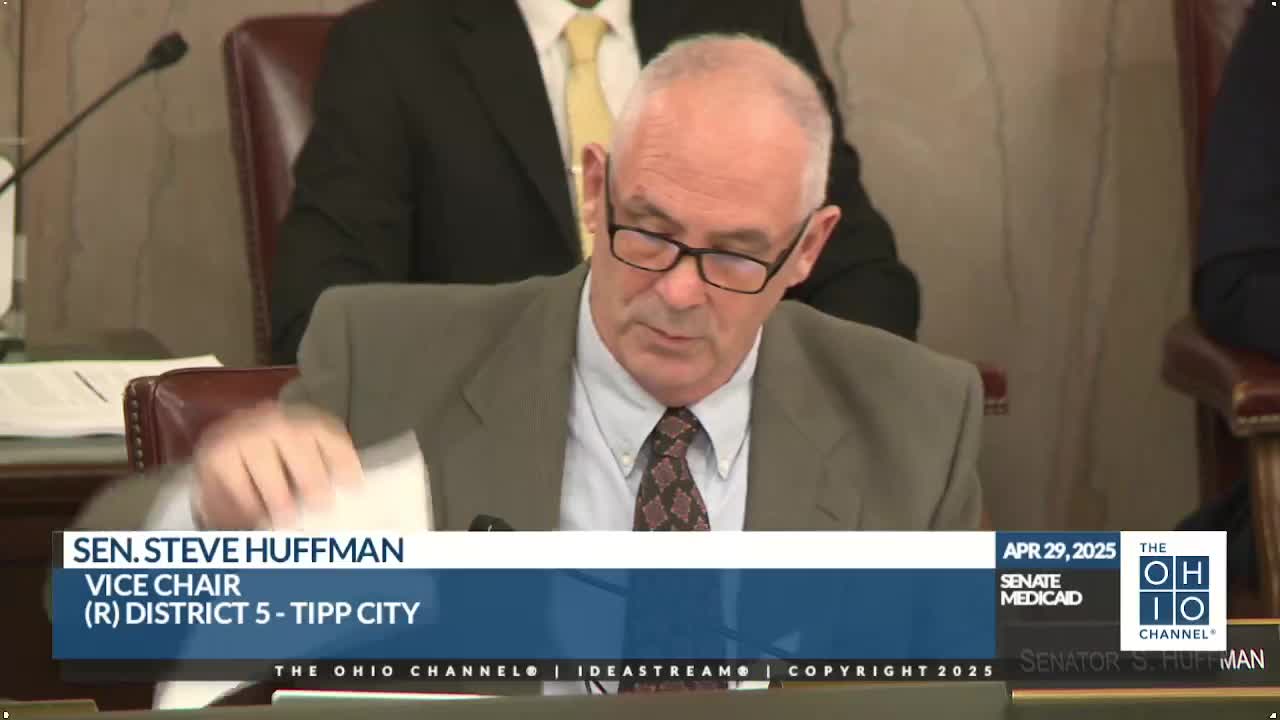Ohio budget proposal increases hospital franchise fee to fund healthcare services
April 29, 2025 | Medicaid, Senate, Committees, Legislative, Ohio
This article was created by AI summarizing key points discussed. AI makes mistakes, so for full details and context, please refer to the video of the full meeting. Please report any errors so we can fix them. Report an error »

In a recent meeting of the Ohio Senate Medicaid Committee, discussions centered around the intricacies of hospital funding and the proposed increase in the hospital franchise fee. As committee members gathered, the atmosphere was charged with anticipation, particularly regarding how these financial adjustments would impact healthcare services across the state.
The meeting began with a focus on the hospital franchise fee, which is set to rise from approximately 4.5% to 7%. This increase is expected to generate significant revenue—around $900 million in the first year and approximately $1 billion in the second year. The funds collected from this fee are crucial as they allow the state to draw down federal matching funds, effectively doubling the financial impact without affecting the state’s General Revenue Fund.
Chairman and committee members were keen to clarify where the funds would be allocated. The proposed budget outlines a split of the new revenue, with 60% directed to the state and 40% to hospitals. This allocation is designed to support various initiatives, including enhancements in behavioral health services and mobile crisis response capabilities. Notably, the budget also aims to address pressing needs in rural hospitals and obstetric care, reflecting feedback from healthcare providers about critical service gaps.
As the discussion progressed, the committee reviewed a detailed hospital package that included policy outlines and spreadsheets to illustrate the financial flow. The documents provided clarity on how the increased fees would be utilized, emphasizing a commitment to transparency and accountability in the funding process.
The meeting also touched on the broader implications of these funding mechanisms. Some committee members expressed concerns about perceptions of the funding model, with comparisons made to less favorable practices. However, officials defended the approach as a legitimate and necessary strategy to ensure hospitals remain financially viable while providing essential services to Ohioans.
In conclusion, the Ohio Senate Medicaid Committee's meeting highlighted a pivotal moment in the state's healthcare funding landscape. With the proposed changes, there is a clear intent to bolster hospital resources and improve patient care, particularly in underserved areas. As the committee moves forward, the focus will remain on ensuring that these funds are effectively utilized to meet the evolving needs of Ohio's healthcare system.
The meeting began with a focus on the hospital franchise fee, which is set to rise from approximately 4.5% to 7%. This increase is expected to generate significant revenue—around $900 million in the first year and approximately $1 billion in the second year. The funds collected from this fee are crucial as they allow the state to draw down federal matching funds, effectively doubling the financial impact without affecting the state’s General Revenue Fund.
Chairman and committee members were keen to clarify where the funds would be allocated. The proposed budget outlines a split of the new revenue, with 60% directed to the state and 40% to hospitals. This allocation is designed to support various initiatives, including enhancements in behavioral health services and mobile crisis response capabilities. Notably, the budget also aims to address pressing needs in rural hospitals and obstetric care, reflecting feedback from healthcare providers about critical service gaps.
As the discussion progressed, the committee reviewed a detailed hospital package that included policy outlines and spreadsheets to illustrate the financial flow. The documents provided clarity on how the increased fees would be utilized, emphasizing a commitment to transparency and accountability in the funding process.
The meeting also touched on the broader implications of these funding mechanisms. Some committee members expressed concerns about perceptions of the funding model, with comparisons made to less favorable practices. However, officials defended the approach as a legitimate and necessary strategy to ensure hospitals remain financially viable while providing essential services to Ohioans.
In conclusion, the Ohio Senate Medicaid Committee's meeting highlighted a pivotal moment in the state's healthcare funding landscape. With the proposed changes, there is a clear intent to bolster hospital resources and improve patient care, particularly in underserved areas. As the committee moves forward, the focus will remain on ensuring that these funds are effectively utilized to meet the evolving needs of Ohio's healthcare system.
View full meeting
This article is based on a recent meeting—watch the full video and explore the complete transcript for deeper insights into the discussion.
View full meeting
